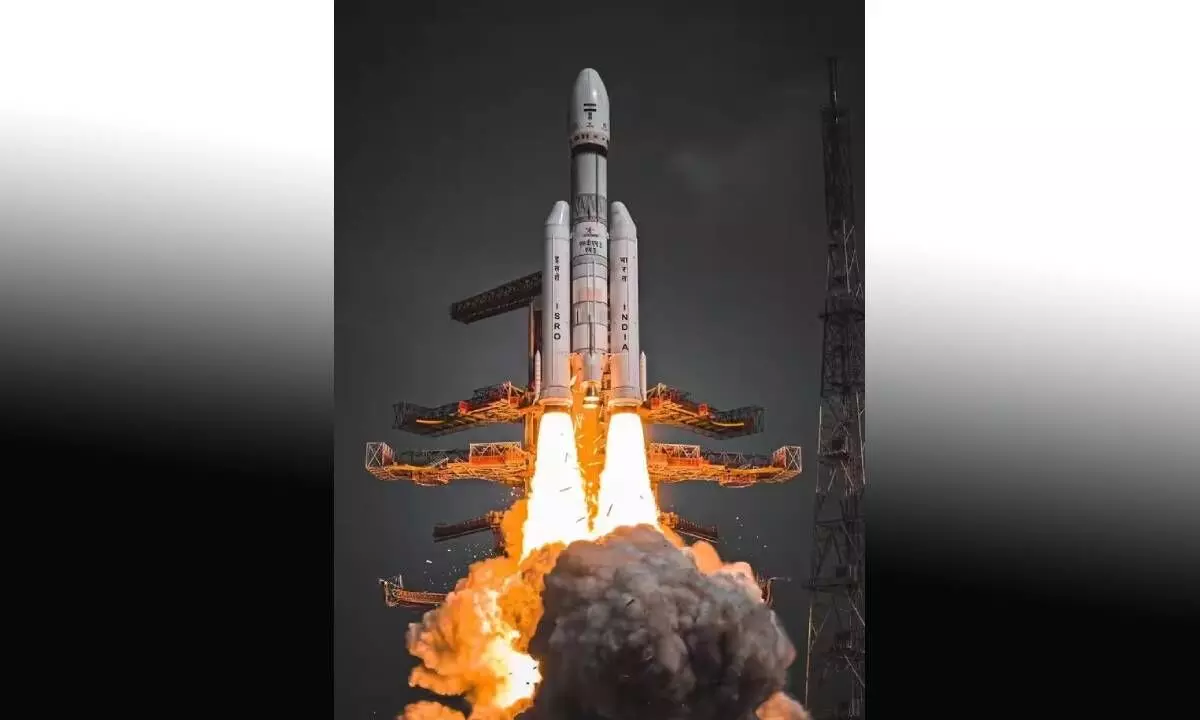Launching dreams, unveiling wonders
Chandrayaan-3 set to become world’s first mission landing near lunar South Pole
image for illustrative purpose

Finally, the auspicious launch day arrived. Amidst a symphony of anticipation and excitement, the Satish Dhawan Space Centre, under the guidance of ISRO, sprang to life. The majestic GSLV Mark-III rocket, capable of carrying heavy payloads, stood tall on the launchpad. The nation held its collective breath as the countdown reached its final seconds. “5... 4... 3... 2... 1... Lift-off!”
With an earth-shaking roar, the rocket surged skyward, piercing through the atmosphere with determined vigor. A collective cheer erupted across the country, a chorus of joy and pride that resonated through the hearts of every Indian. The journey of Chandrayaan-3 from Earth to the Moon is estimated to take around a month, with the landing expected on August 23-24, coinciding with maximum sunlight availability.
We are well aware of the heartbreak that accompanied India’s ambitious second lunar mission, Chandrayaan-2, as communication with the spacecraft’s lander, Vikram, was lost, marking a tragic end to its remarkable journey. Recently, ISRO Chairman S Somanath detailed the reasons for the failure, explaining that unexpected higher thrust from the engines led to errors and compromised the lander’s stability during the coasting phase. Learning from these challenges, Chandrayaan-3 has been designed with a failure-based approach, accounting for potential scenarios and implementing safeguards. Dr W Selvamurthy, Former DG of DRDO and President of Amity Science Technology and Innovation Foundation, expressed his excitement on this historic day for Indian Space Science and Technology. He commended the precision of the launch and the excellent health of all systems. Dr Selvamurthy also praised the leadership and support of Prime Minister Shri Narendra Modi, who has been instrumental in driving India’s space endeavors.
If all goes according to plan, Chandrayaan-3 will become the world’s first mission to achieve a soft landing near the lunar South Pole. Upon its descent next month, Chandrayaan-3 will meticulously explore the lunar surface, examine the electrically-charged atoms in the lunar atmosphere, and search for moonquakes, providing invaluable insights into the Moon’s origin and evolution. The mission will shed light on a shadowy and unexplored region of the Moon. India’s Chandrayaan-3 Moon mission will undoubtedly showcase the nation’s scientific prowess and unwavering commitment to exploration. Its success will propel India further into the realm of space exploration and serve as an inspiration for future generations, encouraging them to reach for the stars.
(The author is working as an Associate Professor at DY Patil International University, Akurdi Pune)

